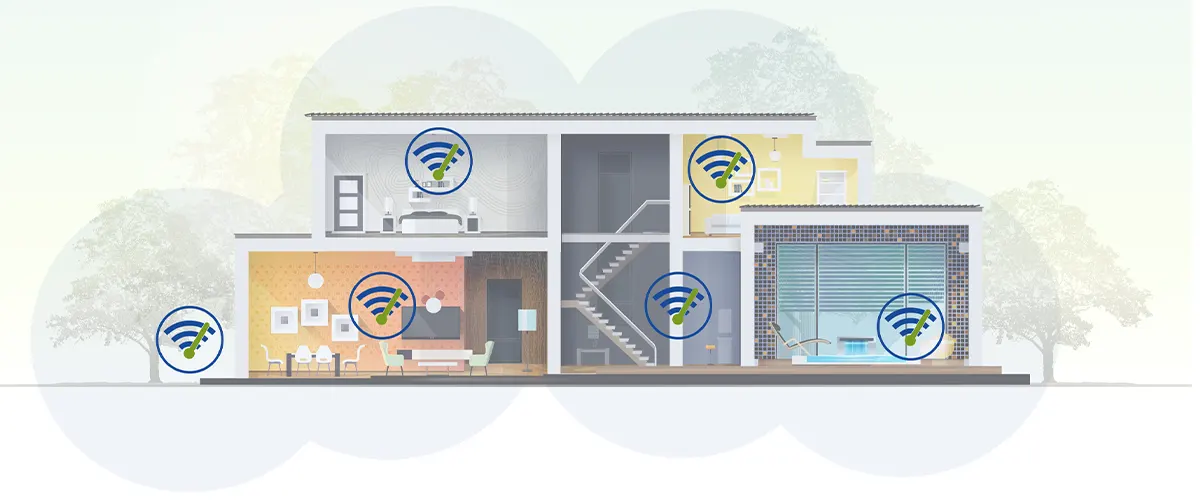Imagine a Wi-Fi network structured like a woven fabric where every device is interconnected. It already exists beyond traditional networks, and it’s known as a “mesh network.” Your main router connects to a series of satellite nodes that form this mesh Wi-Fi system, meaning you no longer have to worry about dead zones. Furthermore, enjoying high speeds is still possible no matter how many devices and users are on a single network. Here are Audio Video Concepts’ four reasons to shift to mesh networking within your home.
Say Goodbye to Ethernet
The frustrating efforts of dealing with Ethernet can become a thing of the past with Wi-Fi mesh technology. The satellite modules that connect to your router are known as nodes, and you have full freedom in dictating where you want them placed in your home. Traditional networks depend on range extenders to maintain communication with the router, which leaves dead zones in spaces with weak signals. However, mesh networking keeps the nodes in constant communication with the router and each other, so you can enjoy a strong connection even if you’re far from the router.

No More Dead Zones
Dead zones are a common problem in households across the nation, with dreaded buffering videos and a slow connection. In a small home, a wireless router is capable of providing full coverage but is too limited when it comes to a home with balconies, multiple levels, concrete substructures, or dense walls. Range extenders can only produce half the standard bandwidth and they come with inconvenient wired connections between access points and the router. To add to the annoyance, each time you enter a different access point across your home, you’re forced to log in to a new network SSID. But these issues are nonexistent with mesh technology; your entire network is registered under one SSID as you enjoy a consistently powerful bandwidth. You can add an unlimited number of satellite nodes to your network, even as far as the perimeter of your property.
A Stronger Network Performance
Most home networks are seeing more simultaneous device usage, since people began to learn, work, and socialize from home. Unfortunately, this means your bandwidth has likely suffered as well and struggles to maintain everyone’s streaming needs. However, the sixth generation of Wi-Fi can handle 30 users at once to game, stream, surf the web, and video conference on a single network, and it’s fully compatible with mesh technology. Furthermore, internal antennas and no blinking lights are features of the main routers and nodes, so they can quietly blend into your home’s décor. If you ever want a wired connection, most routers and nodes feature at least one LAN port.

Simple Management and Installation
With mesh technology and Wi-Fi 6, any member of the family can handle the system even if they lack technical knowledge. Instructions for a swift system installation and recommendations for node placement often come with modern systems. These “smart systems” tend to automatically choose the ideal Wi-Fi channel and radio band that will produce the best wireless connection. By using an app on your mobile device, you can control security settings, individual devices, and your overall Wi-Fi system without having to log in to a confusing administrative website. Automatic updates to the system eliminate the need to check on your system too often.
Everyone should have access to a strong and consistent Wi-Fi connection, whether you need it for work or a night of entertaining shows. It’s time to leave wired connections, Ethernet, and complicated maintenance behind, and incorporate mesh networking into the next step of improving your coverage. If you’re ready to enter the world of satellite nodes, Wi-Fi 6, and mesh networking, contact our team at Audio Video Concepts today.



